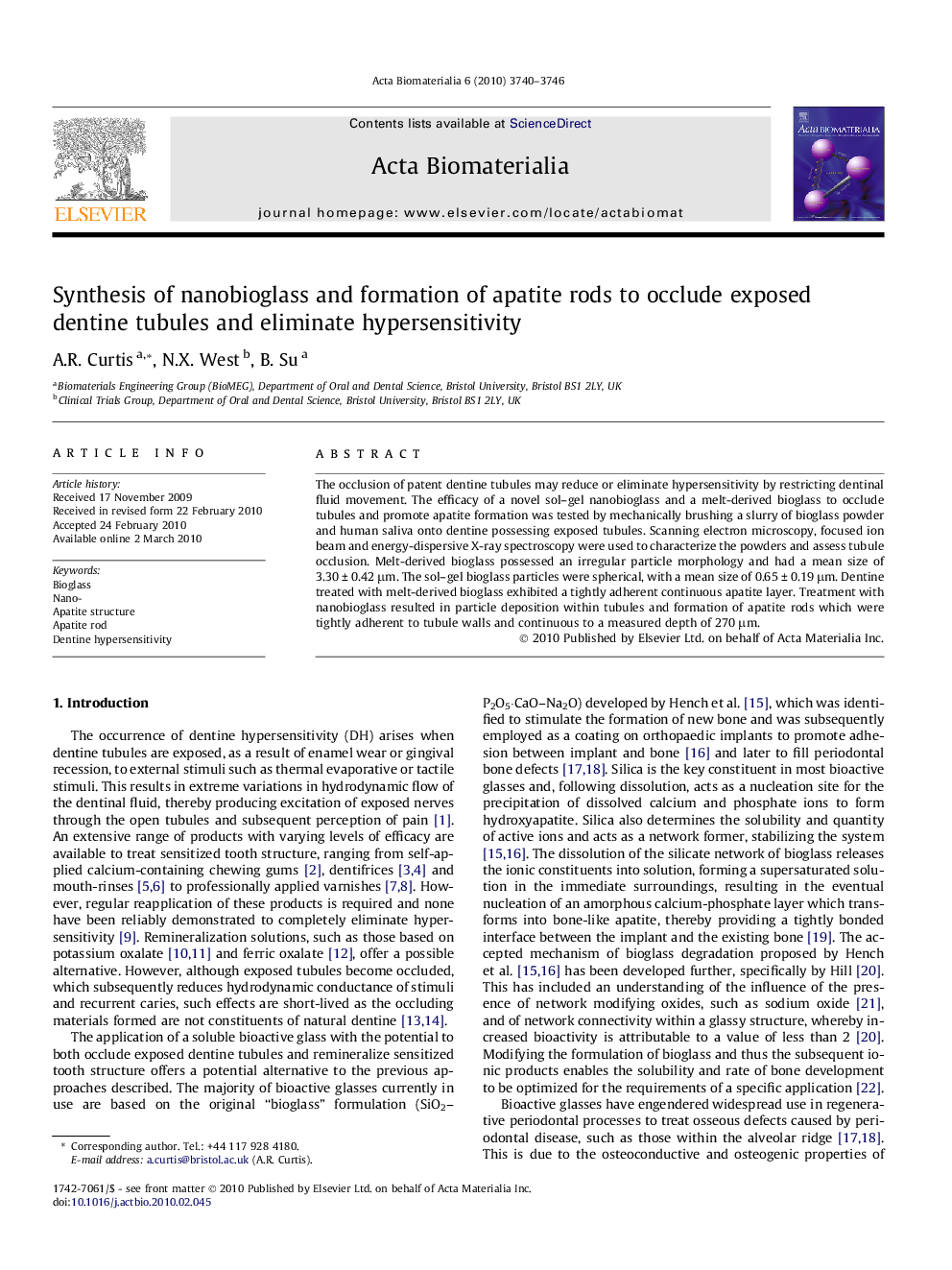| Article ID | Journal | Published Year | Pages | File Type |
|---|---|---|---|---|
| 2170 | Acta Biomaterialia | 2010 | 7 Pages |
The occlusion of patent dentine tubules may reduce or eliminate hypersensitivity by restricting dentinal fluid movement. The efficacy of a novel sol–gel nanobioglass and a melt-derived bioglass to occlude tubules and promote apatite formation was tested by mechanically brushing a slurry of bioglass powder and human saliva onto dentine possessing exposed tubules. Scanning electron microscopy, focused ion beam and energy-dispersive X-ray spectroscopy were used to characterize the powders and assess tubule occlusion. Melt-derived bioglass possessed an irregular particle morphology and had a mean size of 3.30 ± 0.42 μm. The sol–gel bioglass particles were spherical, with a mean size of 0.65 ± 0.19 μm. Dentine treated with melt-derived bioglass exhibited a tightly adherent continuous apatite layer. Treatment with nanobioglass resulted in particle deposition within tubules and formation of apatite rods which were tightly adherent to tubule walls and continuous to a measured depth of 270 μm.
